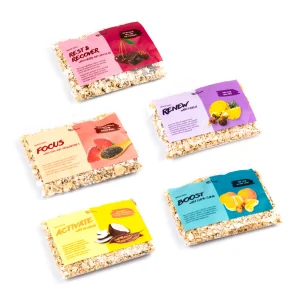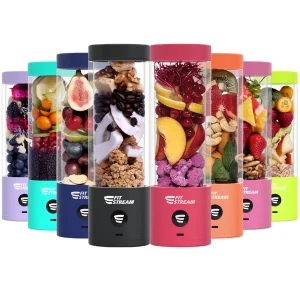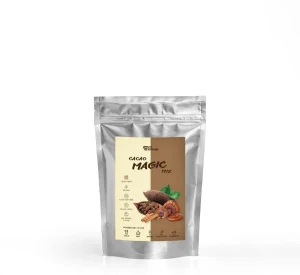Since ancient times, herbs have been a valuable source of flavours, aromas, but also of healing effects in cooking and baking. They play an important role not only in terms of gastronomy, but also in terms of their positive impact on health.
History of the use of herbs
Since ancient times, herbs have been used in various cultures as essential ingredients in cooking and baking. Their use has been reflected not only in the taste of food but also in religious rituals. Records of the use of herbs date back to ancient Egypt, Greece and Rome, where they were part of the daily diet and were also used as preservatives and as part of medicines.
Herbs such as rosemary, thyme, marjoram and basil were the most commonly used in those times. These herbs are still considered the building blocks of many kitchens today and their use has spread throughout the world.
Herbs and their nutritional profile and impact on health
Herbs are an important source of vitamins, minerals and antioxidants. For example, parsley is rich in vitamin C and iron, basil contains essential oils and flavonoids. Mint, thanks to bioactive substances such as menthol, helps soothe the digestive system. Menthol is known for its cooling and relaxing properties, which can help relax the muscles of the digestive tract. Turmeric, known for its anti-inflammatory effects, is often used in Ayurvedic medicine to aid in the treatment of various conditions, including inflammation and pain. Rosemary helps with improving cognitive function and marjoram helps with digestion. Many studies have shown that herbs have a significant impact on health. Due to their anti-inflammatory and antimicrobial properties, herbs have the potential to support the immune system and improve overall health.
Cooking and baking with herbs
Including herbs in meals can help reduce salt consumption by providing a rich flavor. It is important to add herbs to meals in the right way. Fresh herbs that are delicate, such as parsley or basil, are usually added at the end of cooking or directly to finished dishes. Harder herbs, such as rosemary or thyme, can be added earlier in the cooking process, as their strong aromatics can withstand longer cooking without losing their characteristic flavour. In baking, herbs are usually added in dried form, as prolonged time at high temperatures can take away from the aromatic and flavouring properties of fresh herbs.
An overview on the use of some herbs
-
- Basil: ideal for Italian and Mediterranean dishes such as pasta sauces, pesto, or fresh in summer salads with tomatoes and mozzarella.
- Parsley: a versatile herb that lends itself to soups, sauces, marinades, and to sprinkling over almost any finished dish for a fresh accent.
- Coriander: a characteristic herb for Asian and Latin American cuisine, great in cold salads, salsa, curries and as an ingredient in summer rolls.
- Mint: popular in chilled drinks, desserts, and also in Middle Eastern dishes such as tabbouleh or in combination with lamb.
- Thyme: its aromatic leaves are great for long-cooked ragouts, stews, sauces, baked potatoes, and also as an ingredient in pastries and biscuits.
- Rosemary: with its woody sprigs and intense flavour, it is great for marinating meat, added to roast potatoes or focaccia.
- Marjoram: has a similar taste to oregano, but is milder and suitable for sauces, roasted meats and broths.
- Oregano: a classic herb for pizza, marinades and Greek dishes such as moussaka or Greek salads.
- Sage: with its strong flavour, it is suitable for butter-based sauces, stuffed pasta such as ravioli, and with meat, especially roast duck or chicken.
- Lavender: often used in sweet baking, for example in biscuits or cakes, but should be handled with care as its strong flavour can be overpowering for some.
- Dill: with its delicate flavour reminiscent of aniseed, it is often used in Eastern European and Nordic dishes such as fish dishes, pickles and in combination with yoghurts or cream.
Storage of fresh herbs
Fresh herbs are best stored in the refrigerator, either wrapped in damp paper towels or set in water like flowers in a vase. This way they can stay fresh for several days to weeks, depending on the species. Dried herbs should be stored in well-sealed containers in a cool, dark, dry place to preserve their flavour and aroma. In general, dried herbs have a longer shelf life but gradually lose their intensity and should therefore be consumed within a year. You can also store herbs frozen.
Conclusion
Herbs are an integral part of cooking and baking and have a significant impact on our health. Their proper use in cooking and baking can contribute to better tasting food, increase the nutritional value of dishes and can even boost our health.
Don't have time to cook? It doesn't matter at all. Add our news SUPERFOOD GREEN MIX to breakfast porridge to your cereal, smoothie, fruit shake or plain water and stay FIT even on busy days. With the use of FitStream blender you'll blend your drink in seconds and give your body a rich boost of energy.






